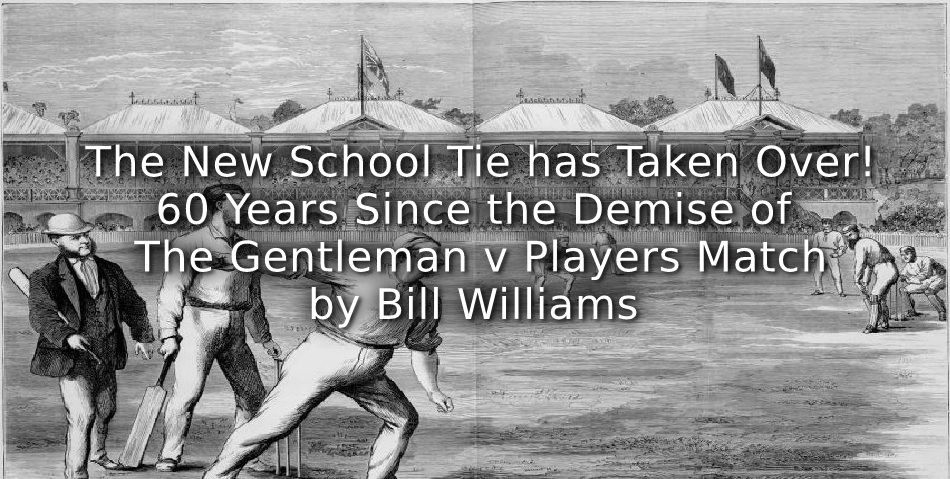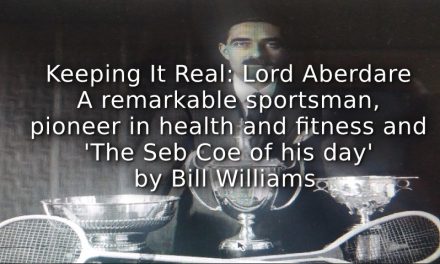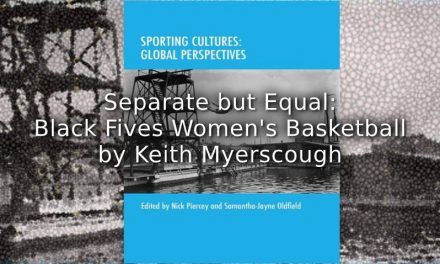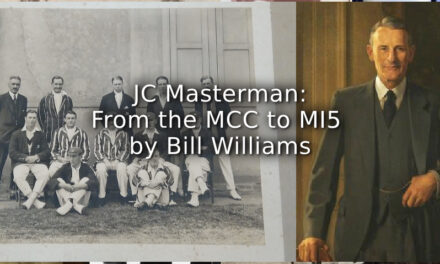The 31st January 2023 will mark 60 years since the traditional Gentlemen v Players Cricket match was officially removed from the cricket calendar by the Marylebone Cricket Club [MCC]

A sign circa 1865 outlining the protocols for the two teams
Author’s Collection
Speaking to journalist John Bromley, later to become head of ITV Sport, in the Daily Mirror in 1962, Sir Jack Hobbs, mourned the death of ‘ The amateur in cricket’, when he discussed the decision of the 17 first class counties to do away with ‘Amateurs’ and ‘Professionals’ and have instead only ‘Cricketers’
Said Sir Jack, who himself played as a professional for Surrey and England
It is sad to see the passing of the amateurs. It signals an end of an era in cricket as the amateurs were a great asset to the game; now times are different, and I can understand the position of the amateur who has to make his living
Micky Stewart, Surrey’s professional vice-captain at the time saw it slightly differently
It was a farce that an amateur could receive money for putting his name to sports equipment and writing articles without this affecting his status
Then of course, there was the ‘snobbery’ aspect which Ken Grieves, Lancashire’s new captain that year, spoke about.
This cuts out the snobbery as in the past a lot of things have been pushed aside for the sake of ‘the old school tie’….the ‘new school tie has taken over’
The original idea it seems was to have a match between two teams consisting of ‘Amateur Gentlemen’ (players that received expenses only and who were from the upper and middle classes. They were usually products of the public school system and played cricket primarily for recreation) and ‘Professional Players’ (who received payment for their performance and who were generally considered to be working class).

An early Gentleman v Players match circa 1830
Authors Collection
Derek Birley in his ‘Social History of English Cricket’, published in 1999, believes that the idea for this type of match came from Lord Frederick Beauclark, who was a ‘cricket obsessed’ vicar, rumoured to be descended from Charles II. Others believe that the match was established by Thomas Lord (founder of Lord’s cricket ground in 1787) and Lord Gordon of Strathavon, who together had the idea to stage such a match. It is likely that what ensued was a combination of all their ideas.

Thomas Lord circa 1830
Authors Collection
In 1798, a challenge was laid down to the leading ‘Playing Professionals’ of the day to play a match against a team of ‘Amateur Players’, but the players were heavily beaten; however, the match was revived 8 years later in 1806, when the teams took on the names, ‘Gentlemen’ and ‘Players’. The Gentlemen won the match this time, but included two professionals in their team, so the victory was considered to be a hollow one and no further matches took place until 1819.
Due to the superior strength of the professional players however, the outcome of the matches became very predictable and therefore, offered very little incentive for gambling, which was a huge factor in the popularity of cricket during this period. Consequently, there was very little interest shown in these early matches.
Various ideas were tried to offset the dominance of the professional team, which included giving the Gentlemen more players, reducing the size of the stumps when they batted and providing them with professional players who were considered to be ‘on loan’, but none of these helped to redress the balance. So much so, that in 1842 the MCC refused to recognise the fixture and it only took place due a private subscription which covered the costs.
The fixture was in danger of being lost to the cricket calendar, until the emergence of Dr William Gilbert Grace (WG), who altered the balance and between 1866 and 1874, the Gentlemen were unbeaten in 19 matches. WG contributed 9 centuries, including 2 double centuries and 4 fifties in this period and the match began to be taken seriously by the MCC at Lords and became viewed as one of the most important of the season.

WG Grace in 1870
Authors Collection
WG came from a cricketing family and in 1880 he played for England in a team which included his brothers, Edward and Fred, the first time that three brothers played together for the same team in a ‘test match’, this would be equalled in 1969/70 by the Mohammed brothers, Hanif, Mushtaq and Sadiq for Pakistan
It is widely accepted that WG was one of the most important figures in the development of the sport and one of its greatest players, and the epitome of ‘The Gentleman Amateur’. As an Amateur and a doctor, he played first class cricket for 44 seasons (making his debut as a 16-year-old) between 1865 and 1908, during which he captained England (playing in 22 tests), Gloucestershire, The MCC, The United South of England Eleven, and The Gentlemen.

The Gentlemen in 1895 captained by WG Grace
Author’s Collection
Grace was an outstanding all-round sportsman, playing football for the Wanderers club and as a young man he won the 440 yards hurdling title at the National Olympian Games in 1866. In later life, he became a founder member of the English Bowling Association and became their president in 1903.
He inspired a new generation of cricket lovers and the sport’s popularity soared at a time when he attempted at the same time, to maintain a doctor’s practise in Bristol. It is well documented that WG claimed significant expenses from the sport, as well as two ‘testimonial’ matches, which earned him well over £10,000, and that he cashed in on his popularity as an entertainer but, argues Will Magee , in ‘The Greatest of Gentlemen’ ( 2016)
He also had a reputation for ‘forgetting’ to charge his poorer patients and in essence, provided ‘free’ medical care to those at the local workhouse
However, despite the widespread ‘shamateurism’ (where an athlete is looked upon as an amateur but acts like a professional by earning money from this sporting achievements), including another prominent cricketer CB Fry, who also excelled at a variety of sports. Fry represented England at cricket and football, played rugby for the Barbarians and equalled the world long jump record of 7m 176 cm in 1893, while at Oxford University. He would have failed the Rugby Football Union’s test of ‘no material gain’. Fry earned money firstly from teaching but more lucratively from journalism and was well paid for his articles about cricket; the MCC turned a blind eye!
WG’s heyday coincided with an increase in the strength of amateur cricket, due largely to the public schools and Oxford and Cambridge universities and it was now the turn of the professionals to catch up, which they did mainly due to the emergence of Arthur Shrewsbury, who was a top class batsman from Nottinghamshire and England. Wisden Cricketer of the Year in 1890, he was also the first man to reach 1,000 runs in test cricket. Shrewsbury, played 23 times for England during his career (he was also a rugby union administrator who organised the first British Isles rugby tour in 1888) and topped the first-class batting averages on 7 occasions and when asked whom he would like in his team, WG replied,
Give me Arthur!
He was a fantastic run maker, especially on what many considered to be ‘sticky’ or difficult wickets, the most notable of which was his 164 against Australia in 1886.

Arthur Shrewsbury- Wisden cricketer of the year in 1890
Author’s Collection
However, the increasing popularity of test cricket after 1877, saw interest in the match start to decline and the concept of ‘amateurism’ and selecting a team on the back of social class was beginning to be viewed as increasingly undesirable
During the inter- war years, the two London matches became the focus and were often seen as the equivalent of an England trial match and players keen to impress the selectors made sure that they were available for the match scheduled at Lords; in order to become England captain, it was accepted that the professional had to adopt amateur status and Wally Hammond (who played in 85 tests for England in a 20 year career), had to change his status from professional to amateur in 1938, in order to become England captain and is the only player ever to captain both the Gentlemen and the Players.

Wally Hammond in 1930
The only man to captain both the Gentlemen and Players
Author’s Collection
Post war matches still had their place in the eyes of players and selectors and Freddie Brown’s performance for the Gentleman (scoring 122 out of 133), resulted in him being chosen to captain England on the 1950/51 tour to Australia. Likewise, David Sheppard’s century in the final Lords match in 1962, secured his place in the England touring party that winter. (He would later become the Bishop of Liverpool).

David Sheppard in 1961- later became The Bishop of Liverpool<br<Author’s Collection
Keith Flett in his blog in 2012
It was the sponsorship of Gillette that finally ended the distinction between the paid professional and the supposedly unpaid amateur, although divisions continued in various ways
In November 1962, the Advisory County Cricket Committee accepted £6.5 million from Gillette to sponsor one day cricket and therefore abolish amateur status. The Times recorded that, ‘cricket breaks with the past’
The distinction seen by spectators prior to 1963, was that the professional cricketer dressed in sober cricket clothes and the amateur, usually idiosyncratically dressed, entered the field of play via separate gates’ The divisions actually went much further than that as players from the respective teams were required to change and eat separately and the only time they actually interacted was on the field of play
In 2012 Martin Williamson wrote
Perhaps the way captaincy was handled was the most ridiculous aspect of it all. Professionals were deemed unable to take on such a role at County level and so often found themselves playing under amateur captains who were barely of club standard
The final match was played at Scarborough in September 1962 with the Gentlemen captained by MJK Smith and the Players led by Fred Trueman (who later said that the fixture was ‘ludicrous and thankfully abolished’); the Players won by 7 wickets. The two captains very much embodied the class divide in terms of education and privilege and it was surely no coincidence that these two fine cricketers were chosen on opposite sides for the final match.

MJK Smith- captained the Gentlemen in the final match in 1962
Author’s collection
Smith had been educated privately at Stamford school and went on to study at Oxford University, before captaining England on 25 occasions during his 50-cap career. Interestingly, he also played rugby union for England against Wales in 1956 and remains England’s last dual rugby/cricket international.
Trueman, attended Maltby Secondary School in Yorkshire and left school at 14, taking on several jobs, one of which was at the local colliery as an office boy before joining the army for his National Service in 1951. He played in 67 tests for England during his career, proving that talent and hard work were just as important as social status, but never captained the national team.

Fred Trueman leads out the Players at Scarborough
Author’s Collection
When amateur status ended, the cricket authorities were worried that ‘professionalism’ would damage the sport, but for most players involved there was little regret at the disappearance of the amateur and this archaic tradition, which belonged to a different age. With Simon Hutchins noting in 2020
After that, it was not possible to play the game because the distinction between Gentlemen and Players had been removed as it was increasingly seen as an anachronism in a changing world
In total 274 matches were played between 1806 and 1962, with the Players winning 125, the Gentlemen 68, 80 draws and 1 tie.
However, in ‘Deconstructing the Gentleman Amateur (2021), Duncan Stone concludes that,
The successes of the Victorian/Edwardian Gentleman Amateur have perpetuated the elitist culture and control of British sport and the social and cultural control has been so successful, that the make-up of the current Government (65% of the Cabinet were educated in the independent sector),remains a significant influence on British sport today
As in the current Conservative cabinet, the privately educated are once again overrepresented in British professional sport, with 35% of GB medallists in Tokyo coming from an independent school (four times higher than the 7% of the country who attend private schools), 63% of the current England men’s cricket team and 54% of the England rugby union men’s team are also from a similar background.
Stone, writing in 2019 argues
Off the field, the BBC’s Test Match Special remains dominated by public school attitudes and archetypes and there is little doubt that the privately educated benefit from social and administrative structures that ensure class divisions remain as strong as ever. The long term dominance of privately educated men in the game’s administration and media, has ensured that the aesthetic image of the Gentleman Amateur has endured and even the adoption of the hymn, ‘Jerusalem’ as England’s cricket anthem, suggests that is still influenced by a very small group of Victorian/ Edwardian gentlemen.
It appears perhaps then, that the ‘old school tie’ is still firmly in place!

The Gentleman upstage the Players in 2010 at Wormsley
Author’s Collection
As a postscript, in August 2010, a Twenty20 match was organised between a team of ‘Gentlemen and Players’ at the Wormsley Estate in Buckinghamshire, to raise money for various charities. In this match, the Gentlemen were made up of a group of U19 cricketers from Blackheath CC and some London state schools and the Players were an all-star team, representing the ‘Professional Cricketers Association Masters’, captained by Robert Key (mow managing director of the England cricket team). The Gentlemen won by 5 wickets off the final ball of the match; the first time since 1953. Maybe this is the way forward for this concept?
There has been no suggestion of another match taking place, however James Harris, current chair of the Professional Cricketers Association, did make the following statement:
I don’t know of any such matches being planned but I wouldn’t rule it out. However, any such match would need to be more in keeping with modern times
We shall watch this space
Article © of Bill Williams





